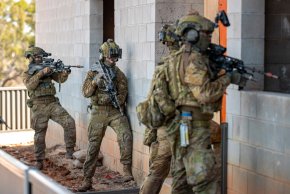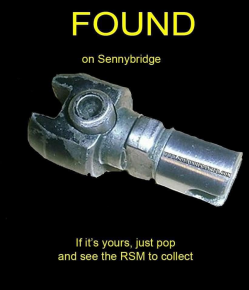Thanks Takao.
Depressing reading. I had hopes that Land 400 would finally see the ADF with significant landpower and that is clearly not the case. I would add that from your desciption above with the 1000 IFV variant number only includes 2 BG of the follow on Brigade so the true need would indeed be more like 1500.
A couple of questions from me:
1. What would the role of Cav/CRV be here and would that replace any of the IFV variant ask?
2. Could instead of 4 triangular BG intead go for 2 armoured & 2 mech inf BG instead? Would this reduce the ask and would it fit within doctrine?
More broadly, looking at the numbers provided it feels unlikely that the 1000 (let alone 1500) variants would not be affordable. If these numbers are required for the current strategy to be implemented is there then a need to re-visit the strategy.
Thanks again as always - greatly appreciate the insight.
Regards,
Massive
Ah, you have put your finger on some of the points that make this challenging and why/how many on the internets miss the details.
Specific answers:
1. The cavalry are going to be focused on the screen/guard. There is probably going to be 2x Sqn of CRV there, along with most of the Regt HQ and log train. You may even see some elements (1 - 2x Sqn) pulled out to provide a Div asset; but I'm not sure how CRV v ASLAV doctrine will shake out there. You very well may be able to replace some of the IFV detachments with CRV, although I'd expect a cavalry Sqn or Tp to be added simply because a CRV cannot act as an IFV. The most likely place is in the security BG, the CRV mobility and inherent reconnaissance capability will enable control over a greater area than an IFV Coy. The final role, and where this element sits in the chain of command is intriguing, is the escorts of convoys. Something that we very rarely practise, but our logistic convoys are unlikely to be running around without some form of escort, and a CRV Tp would do that very well.
2. Simply put, yes. The definition of a BG is a task-orientated organisation. So you can pull elements out or add them in as you want, there would be (assuming you have the kit) nothing wrong with running BG as you say. I simply went four like ones for ease of maths and the best flexibility of C2 - now the Bde Comd can rotate the main weight of combat, be assured a reserve that is at strength, and smiplify logistics.
Now some general answers/comments.
First off, there are options that reduce that 1040x number. Like all things though, they come with risks and cons. The easiest ones are to accept similar risks that I discussed in the tanks area:
you cut the two BG (shudder...) and run no reserves (shuddddder.... #PrincipleOfWar) and run no training (*twitching uncontrollably*) and assume at least 95% serviceability (*bzzzrtsatrb*).
Obviously not a fan, but that could cut 150 - 400x ish off the total, depending what risks you were comfortable with.
Next easiest is to look at what variants need to absolutely be an IFV hull v which don't. Some of the C2 variants could be CRV, especially the RAA ones. You may reduce some engineer variants in favour of the M1-hulled versions. An 'easy' answer could be replacing some of the logistic variants with M113AS4-hulls, especially robotic ones. But, now you have tactical and strategic supply chain issues. Now you have to add CRV spares into the supply chain that was originally 'just' IFV and M1. Might not be an issue, especially if you have a cav Tp or Sqn already in there (screen/guard especially). The replacing with M113s (or similar simply platform) reflects
@OldTex's comments about FV432 in OP TELIC, but also injects the strategic logistics issue. Now I have to keep funding an M113 fleet (and every dollar spent on an M113 is one less to spend on an IFV). I have to carry M13 spares. I have to train M113 drivers and maintainers. You still need the same number of platforms, so does the overall cost savings of going from 1040x to 840x IFV pay for 200x M113AS4?
Next, we could beef up some BG to save on IFV. We could replace 16x IFV with 10x M-1A2, make some of the BG as 2x Tk and 1x Mech. Depending on unit cost, an M-1 could be cheaper, use less crew and be more resilient. But...as much as I love tanks, the shortage in almost every single war lies in infantry numbers...so there are likely to be tactical and longevity risks in doing so.
Similarly, we could remove some of the variants through consolidation or trimming Spt Coy. Depending on how big the log variants are, we may be able to remove 10 - 15% simply though grouping like to gather. You probably don't need 3x Class I log variants for a BG (one from each CT), maybe 2x is fine. Or, does Spt Coy need pioneers when you have a CER Sqn attached? Can the snipers be doled out without vehicles, perhaps into CRVs or other IFVs? Do we even need a reconnaissance Pl in Spt Coy when we have CRVs and the like (removing that Pl would save 30x IFVs...). I'm not suggesting we do, but base assumptions about an Inf Bn probably should be revisited.
Finally, we can accept risk and build when needed. This is why industry is so vital, I cringe every time I see "Defence shouldn't be a jobs program" because making it a jobs program is how we do it properly. If you have a production line you can ramp up production (which, by the way, then kits out the second Brigade and replaces casualties) so we can have 450x now (well....2024 onwards) but, if needs be, in 2027 we can roll out another 600x vehicles. Now, is that feasible? Well...... it depends. It needs a solid industry (oh for a National
Shipbuilding Heavy Vehicle Building Plan), solid supply chains (hello RAN...) and a solid mobilisation plan (oh.....). The actual production I'm not too concerned about, I have seen the plans for a portable production line that could produce 30 - 50x AFV within 10 days, so a fixed factory could probably double that at least (assuming sub-assemblies are available).
So, as many have noted, the ADF cannot afford 1040x IFV now. But allowing for some risks (and that's a whole other post....), some pre-planning, some industry, and some mix and match, we can get away with 450. Which is why we are buying 450 and not 1040. But, it's like everything. We can't afford the number of frigates we need, we can't afford the number of tanks we need, we can't afford the number of C-17 we need, we can't afford the... *sigh*. My post reflected what is doctrinally needed. We are not slaves to doctrine, but it provides the basis of all we do. It has been entertaining watching people say it's wrong and too many - it's the harsh reality of war that the ADF and Australia has under estimated its
need for decades. We have taken a lot of risk, and I'd much rather people be arguing that risk than kit. Challenge the strategic assumptions and directions - you'll not really be able to challenge specific numbers or force structure (certainly not without challenging fundamental basics - which is fine, but harder than most realise).

 www.linkedin.com
www.linkedin.com


 www.linkedin.com
www.linkedin.com




